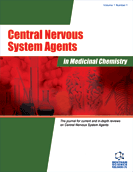
Full text loading...
Audiogenic Epilepsy (AEs) is a subtype of epileptic seizure that is generally caused by high-intensity sounds. A large number of traditional medicines has been explored in this lieu where our study chased Galium verum L. (Rubiaceae), an herbal plant which is commonly known as Lady's Bedstraw, that contains a highly rich chemical composition including flavonoids (Hispidulin, Quercetin, and Kaempferol), and phenolic acids (chlorogenic acid, caftaric acid, and gallic acid). G verum is well known for its antioxidant, neuroprotective, and anti-inflammatory properties. Recently, the unique role of Adhesion G Protein-Coupled Receptor V1 (ADGRV1) protein in the progression of audiogenic epilepsy has been explored.
This study aimed to examine the potent phytoconstituents of the hydroalcoholic extract of G. verum L. (HEGV) using analytical techniques. Additionally, our study sought to evaluate the antioxidant, neuroprotective, anti-inflammatory properties, and antiepileptic potency of HEGV by targeting ADGRV1 via in silico and in vitro analyses using SH-SY5Y cells.
HPLC and LC-MS techniques were employed to identify the flavonoids, iridoids, and phenolic acid derivatives present in HEGV. DPPH (2,2-diphenyl-1-picrylhydrazyl), nitric oxide (NO), and hydroxyl (OH) radical scavenging assays were performed to confirm the antioxidant potential of the extract. Additionally, in silico molecular docking and molecular dynamic studies were performed using AutoDock Vina software to analyze the possible interactions between crucial phytoconstituents of HEGV and ADGRV1, followed by cell line analysis. In the in vitro analysis, antioxidant, neuroprotective, and anti-inflammatory properties were assessed via cell viability assay, IL, GABA, and glutamate estimation.
LC-MS and HPLC analyses revealed high concentrations of hispidulin, a major flavonoid found in HEGV. HEGV exhibited moderate-to-high free radical-scavenging activities comparable to those of ascorbic acid. Docking analysis demonstrated that hispidulin has a stronger binding affinity with ADGRV1 (Vina score = -8.6 kcal/mol) than other compounds. Furthermore, cell line analysis revealed that the MSG exacerbates the neurodegeneration and neuroinflammation, whereas, HEGV and Hispidulin both possess neuroprotective, antioxidant, and antiepileptic activities.
HEGV and Hispidulin proved to be promising candidates for treating audiogenic epilepsy by modulating ADGRV1.

Article metrics loading...

Full text loading...
References


Data & Media loading...

